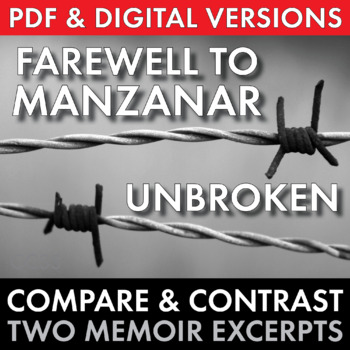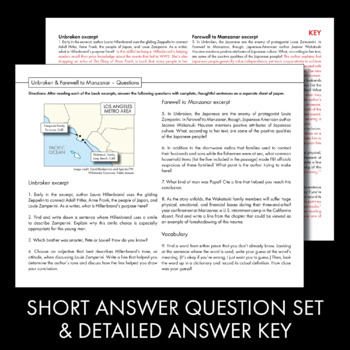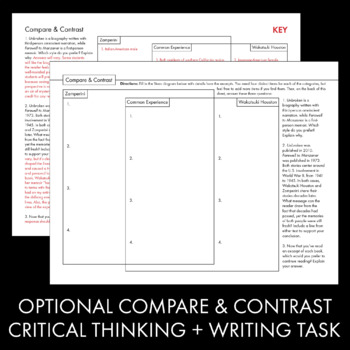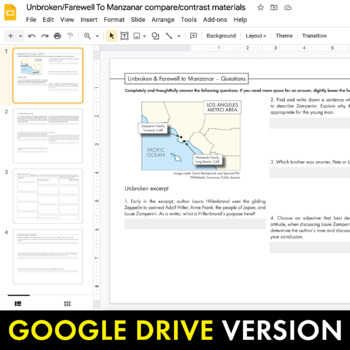Unbroken, Farewell to Manzanar, Compare & Contrast Non-Fiction, PDF & Google App
- PDF
- Google Apps™

What educators are saying
Description
Get teens excited about non-fiction with this two-day lesson featuring a compare-and-contrast of two gripping stories from World War II. First, read an excerpt of Unbroken, Laura Hillenbrand’s New York Times bestselling biography of Olympic runner and Army Air Corps P.O.W. Louie Zamperini. Then, introduce your students to a family confined to a Japanese internment camp in California’s Death Valley, as documented in Jeanne Wakatsuki Houston’s memoir Farewell to Manzanar.
Don’t have class sets of either book? No problem! The publishers have released free excerpts online of the portions used in this lesson. (Links included on page 1 of the PDF. Just print-and-teach or have kids use their phones/devices/computer lab to access the online material.)
After reading the two short pieces, have students complete the question handout, which will require them to dig back into the texts and their own minds to find the answers. A detailed answer key is included to help guide a class discussion as you review the answers on the second day with your entire class. This step is especially helpful to serve as a model for students who struggle with text complexity and analysis.
Additionally, a follow-up compare/contrast Venn diagram activity is included, designed to be used on the second day of instruction. Students can complete the handouts either as solo work, small group tasks, or as independent homework assignments – your choice!
This product downloads as a PDF and includes Google Drive versions of the student handouts.
Designed as a two-day stand-alone lesson, but these materials would also make an excellent supplement/companion lesson for any unit on WWII literature, including:
Night
The Diary of Anne Frank
The Boy in the Striped Pajamas
The Book Thief
Want more relevant, meaningful non-fiction materials to use in your classes? Just click here to view my full catalog of non-fiction and informational text lesson ideas.
Thanks for stopping by!
Cover image credit: Pixabay, Public domain





